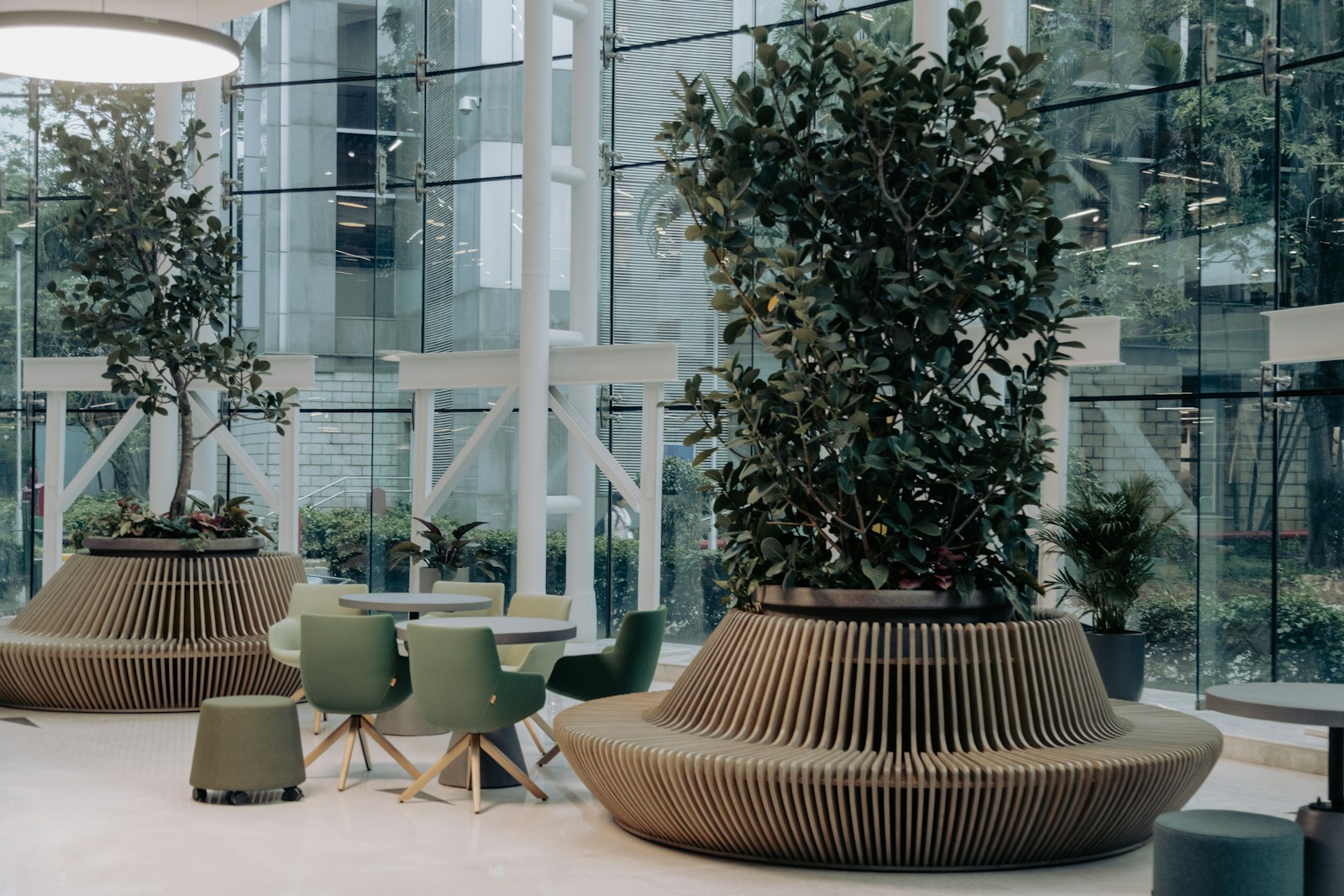Biophilic Design: Bringing Nature Indoors

In a world where urbanisation and technology dominate, the yearning for a connection to nature has never been more profound. Enter biophilic design—a revolutionary approach that integrates natural elements into our living and working spaces to enhance well-being, creativity, and sustainability. As we navigate the complexities of modern life, biophilic design offers a refreshing antidote by fostering a deep, inherent bond with the natural world. Here’s an exploration of what biophilic design is, its benefits, and how to incorporate it into your spaces.
What is Biophilic Design?
Biophilic design is based on the concept that humans have an innate connection to nature, a theory known as biophilia. This design philosophy aims to incorporate natural elements into interior and architectural design, creating environments that nurture this connection. Biophilic design goes beyond mere aesthetics—it’s about creating spaces that improve mental and physical well-being, enhance productivity, and foster a sense of harmony and balance.
The Benefits of Biophilic Design
Enhanced Well-Being and Mental Health
Numerous studies have shown that exposure to natural elements can reduce stress, improve mood, and boost overall mental health. Biophilic design elements, such as indoor plants, natural light, and water features, help create calming and restorative environments that promote relaxation and reduce anxiety.
Increased Productivity and Creativity
Incorporating natural elements into workspaces has been linked to increased productivity and creativity. Employees working in environments with biophilic design elements report higher levels of concentration and job satisfaction. Natural light and views of nature can reduce fatigue and stimulate creative thinking.
Improved Air Quality
Plants are natural air purifiers. By introducing greenery into indoor spaces, biophilic design helps to improve air quality by filtering pollutants and releasing oxygen. This not only makes the air cleaner but also enhances cognitive function and overall health.
Energy Efficiency
Biophilic design often involves maximizing natural light and incorporating natural ventilation systems, reducing the need for artificial lighting and air conditioning. This can lead to significant energy savings and a smaller carbon footprint.
Key Elements of Biophilic Design
Natural Light
Maximising natural light is a cornerstone of biophilic design. Large windows, skylights, and open spaces allow sunlight to flood interiors, creating bright and inviting environments. Natural light not only enhances mood but also helps regulate circadian rhythms, improving sleep patterns and overall health.
Indoor Plants
Integrating plants into interior spaces is one of the simplest and most effective ways to embrace biophilic design. From small potted plants to large indoor trees, greenery adds life and vibrancy to any space. Plants also contribute to air purification and humidity regulation.
Natural Materials
Using natural materials like wood, stone, bamboo, and wool creates a tactile connection to nature. These materials bring warmth and texture to interiors, fostering a sense of comfort and tranquility. Reclaimed and sustainably sourced materials further enhance the environmental benefits.
Water Features
Water has a soothing and calming effect. Incorporating water features such as fountains, aquariums, or even small indoor ponds can create a tranquil ambiance. The sound of flowing water can reduce stress and enhance the sensory experience of a space.
Views of Nature
Designing spaces with views of nature, whether it’s a garden, park, or urban green space, significantly impacts well-being. Large windows and open layouts that offer unobstructed views help blur the lines between indoors and outdoors, fostering a deeper connection to the environment.
Natural Shapes and Patterns
Biophilic design often incorporates natural shapes and patterns, known as biomorphic forms. These can be seen in furniture design, architectural details, and decorative elements that mimic organic forms found in nature, such as curves, fractals, and floral patterns.
How to Incorporate Biophilic Design into Your Space
Start Small
You don’t need to overhaul your entire space to benefit from biophilic design. Start by adding a few potted plants or incorporating natural materials into your decor. Gradually introduce more elements as you become comfortable with the concept.
Maximise Natural Light
Rearrange furniture to allow more natural light to enter your space. Use sheer curtains instead of heavy drapes to let sunlight filter through. Consider installing mirrors to reflect light and make the space feel brighter and more open.
Create a Green Corner
Designate a corner of your home or office as a green space. Fill it with a variety of plants, a small water feature, and natural materials. This can serve as a mini indoor garden and a place for relaxation and rejuvenation.
Incorporate Nature-Inspired Art
Decorate your walls with nature-inspired art, such as botanical prints, landscape photographs, or paintings depicting natural scenes. This can evoke the feeling of being in nature, even when you’re indoors.
Use Natural Textures and Colours
Choose furniture and decor items that feature natural textures and colours. Earthy tones, organic shapes, and textured fabrics can enhance the biophilic feel of your space. Consider items made from wood, stone, jute, and other natural materials.
Conclusion
Biophilic design is more than just a trend—it’s a movement towards creating spaces that nurture our intrinsic connection to nature. By thoughtfully integrating natural elements into our interiors, we can create environments that enhance well-being, boost productivity, and promote sustainability. Whether you’re redesigning your home, office, or any other space, embracing biophilic design principles can transform your surroundings into a sanctuary of natural beauty and tranquility.
